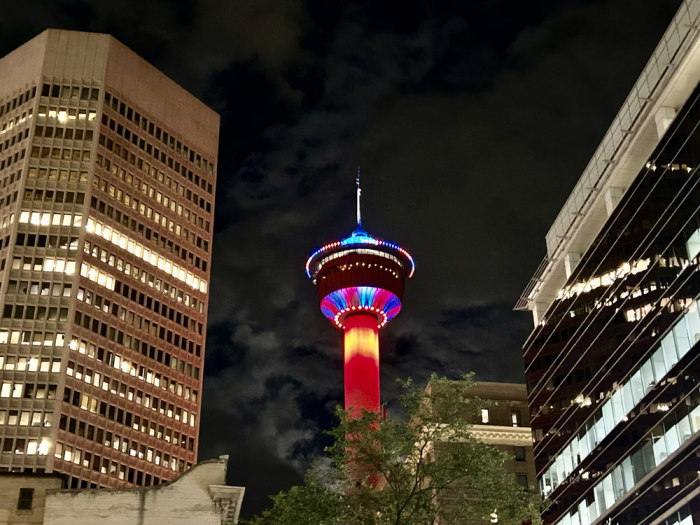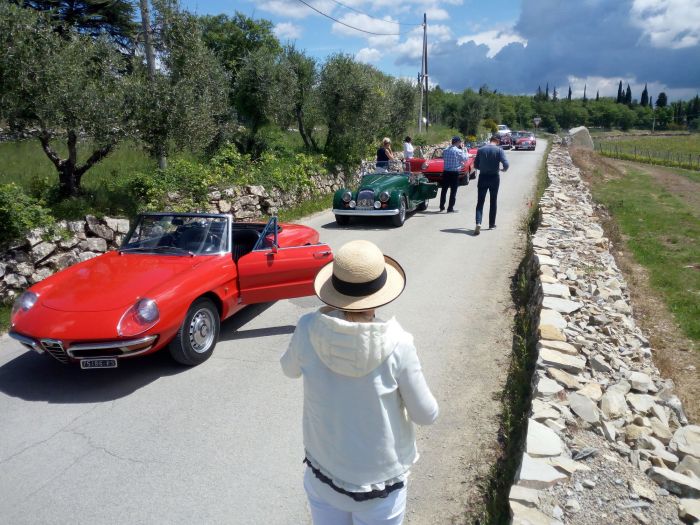Rediscovering New England - New Hampshire (part 3)
"Men hang out their signs indicative of their respective trades; shoemakers hang out a gigantic shoe, jewelers a monster watch, and the dentist hangs out a gold tooth; but up in the Mountains of New Hampshire, God Almighty has hung out a sign to show that there He makes men."
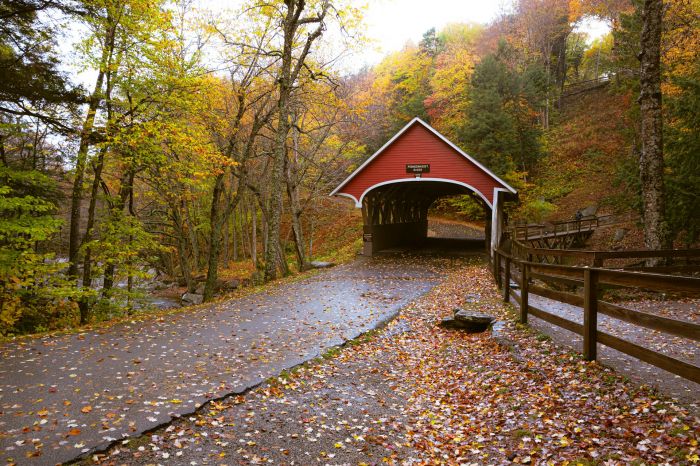
— Daniel Webster shared his sentiments on New Hampshire back in the 1800s. He was a lawyer and statesman who represented New Hampshire and Massachusetts in the U.S. Congress. He knew New Hampshire well, its natural beauty, but also how raw and punishing the region could be, especially its long winters.
This is the third chapter of my journey through New England, a region I left in my youth to see more of the world. Returning now, I am drawn less by nostalgia than by rediscovery. Unlike the days of the early settlers, my time here was filled with creature comforts and fine living, balanced by the great outdoors during its beautiful autumn season.
The White Mountain Way
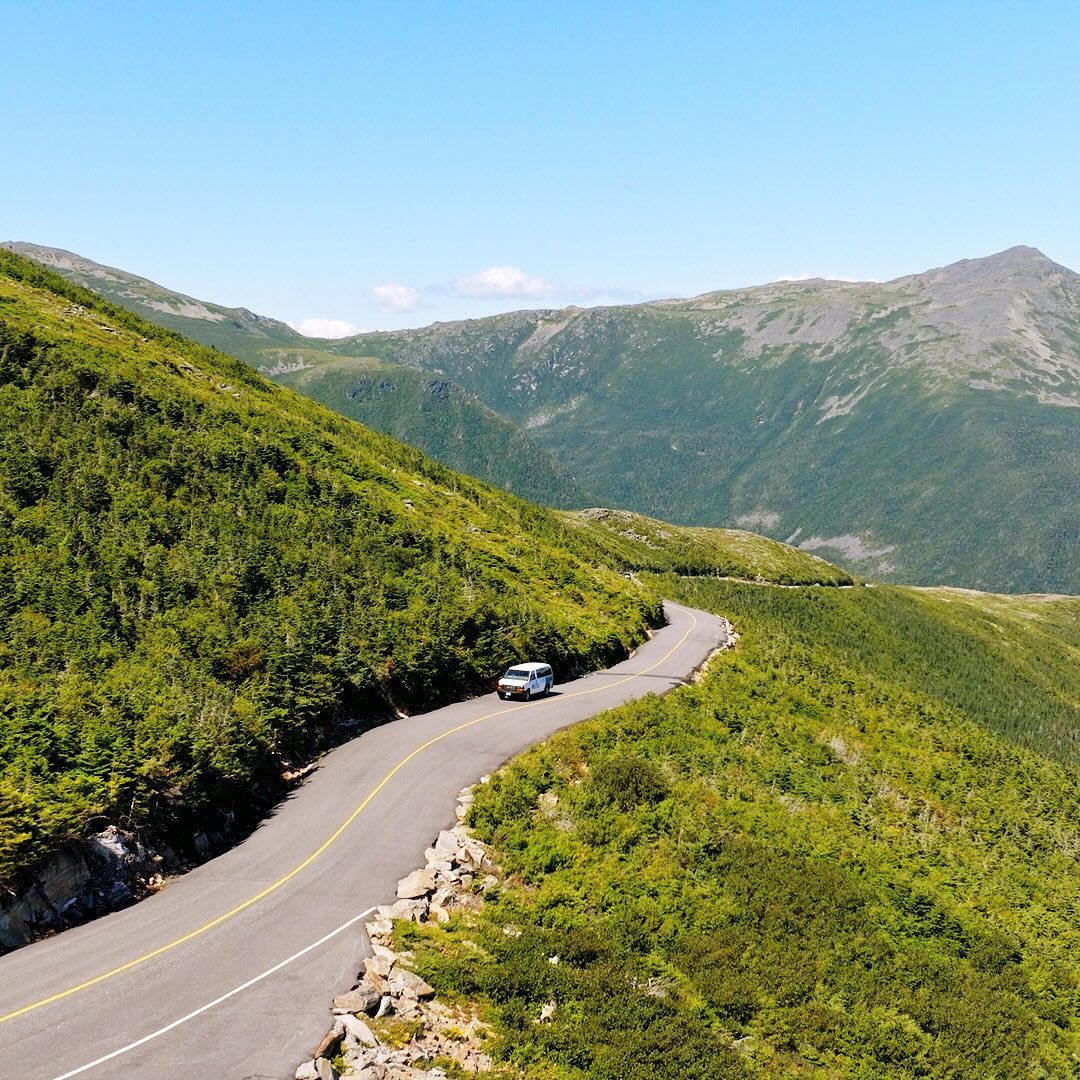
New Hampshire presents two distinct landscapes. One is known for its mountains and ski resorts; the other, for its coastal region of salt air and rolling hills. In the north, near the Vermont border, the terrain is defined by granite outcrops, clear rivers, and dense forests. There you will find hamlets and villages more reminiscent of Andy Griffith’s Mayberry than of any urban sprawl.
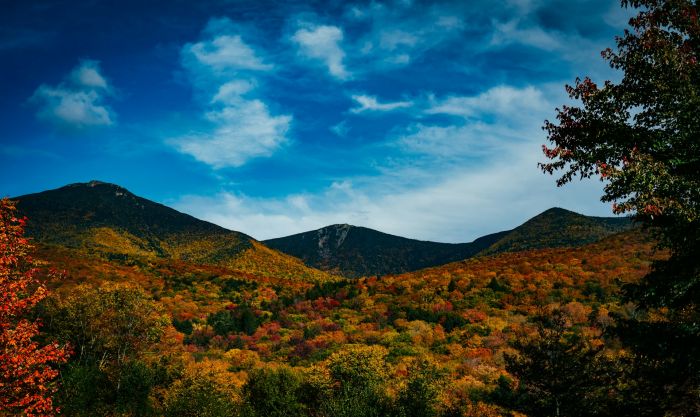
The White Mountains are its crowned jewel, composed of rugged peaks, deep valleys, and vast forests. This is God’s country, a landscape of trees, mountains, and valleys best viewed from its summits when they are not covered by clouds. Mount Washington, at 6,288 feet, is the tallest in the Northeast. From there, you can see surrounding regions of Vermont and Maine, and even Canada on a clear day.
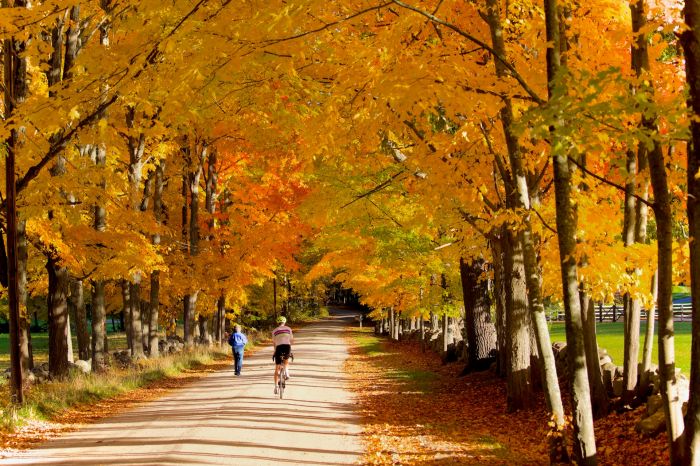
New Hampshire’s environment is its richest asset filled with hardwood trees such as oak and maple dominating the lower elevations, while you’ll find spruce and fir thriving near the summits. Autumn transforms the forests into a breathtaking spectrum of red, amber, and gold. It is one of the most beautiful places in the world to take in the colors of fall. However, winter brings skiing opportunities and although doesn’t have the altitude of its neighbors Killington and Sugarloaf in Vermont and Maine, it holds it’s own with resorts like Bretton Woods, Loon Mountain, and Cannon Mountain.

The character of the region extends to its people. New Hampshire’s motto, Live Free or Die, reflects a lifestyle rooted in independence. Part of that attitude is that helmets and seatbelts are optional. Locals are genuinely friendly and warm and with a sense of humor will share that the lax helmet and seatbelts laws are the reason that the state leads the nation in organ donations. During summer, motorcycles are a common sight, from vintage choppers to modern cruisers. The open air calls for sun on your face and wind in your hair, whether you are on two wheels, in a convertible, or at the very least, under an open sunroof.
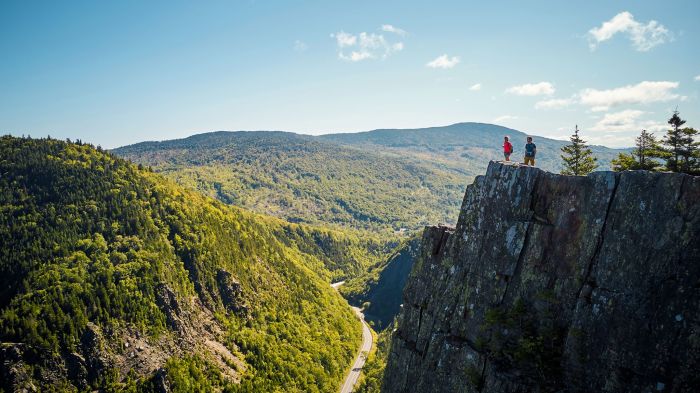
The mountains offer numerous trails and lookouts and some world class hiking. Cathedral Ledge in Bartlett rises above the Saco River Valley, its granite face offering sweeping views. Nearby, Diana’s Baths consists of smooth granite rocks and boulders where small waterfalls cascade into natural pools. These are popular for cooling off in summer, especially after a day of hiking where you’ll also take in views of surrounding peaks like Mount Chocorua.

At Pinkham Notch, the Mount Washington Auto Road begins at a visitor center with a café, gift shop, and museum. Built in the 1800s and still family-owned, the road first carried carriages and later motorcars to the summit. Today, visitors can take guided auto tours in four-wheel-drive vehicles or ride the historic cog railway. Both have guides that narrated with stories highlighting the mountain’s geology, flora, and folklore. In winter, specially equipped vehicles maintain access to the summit despite icy conditions.

Throughout this area wildlife thrives here. Moose, black bears, bobcats, and white-tailed deer roam the forests, while peregrine falcons and red-tailed hawks patrol the skies. Trails are clearly marked, and the Appalachian Trail passes through several peaks. Many mountains bear presidential names, including Adams, Jefferson, Madison, and Washington, offering routes of varying difficulty and viewpoints that reveal the diversity of the terrain.
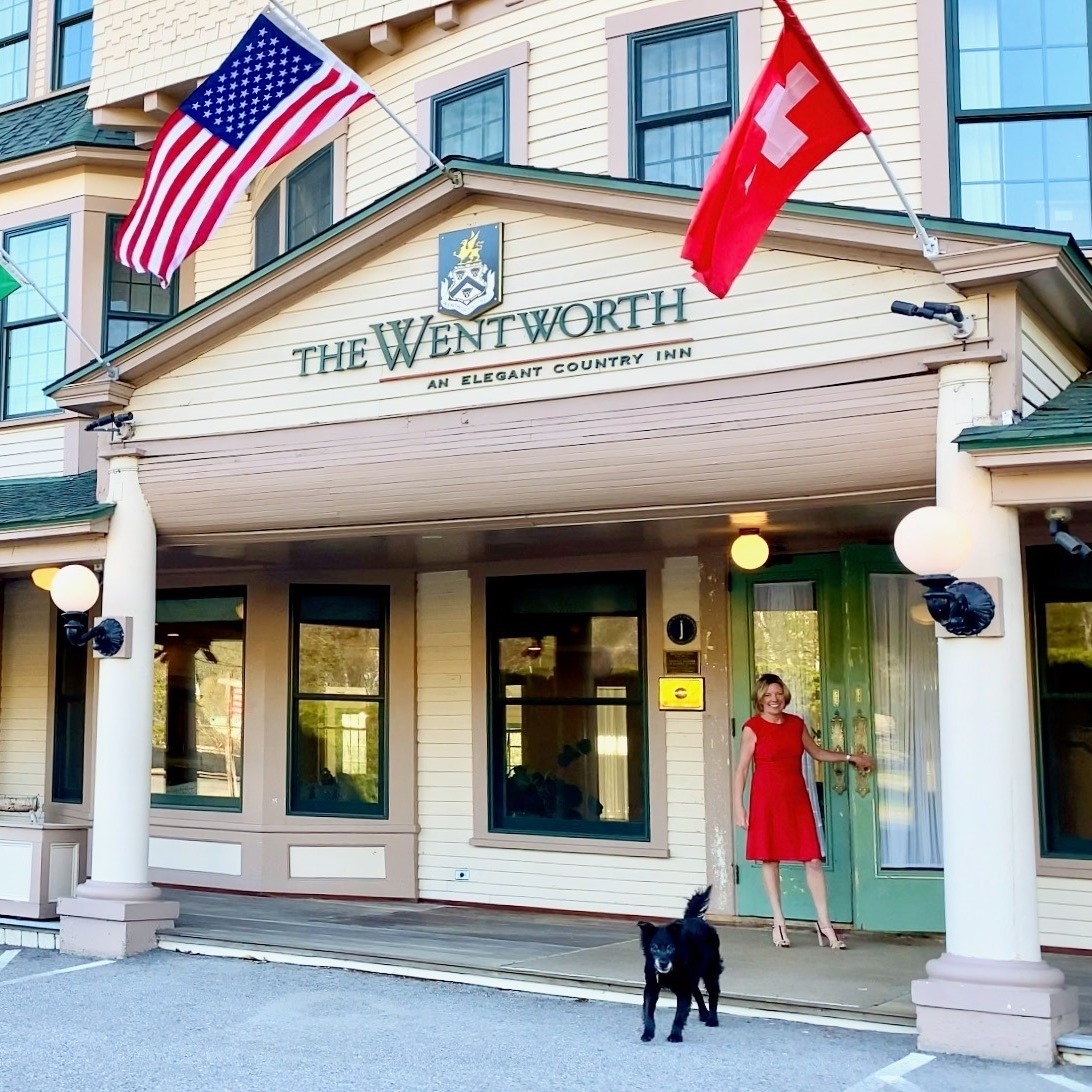
Nearby is the village of Jackson, a quintessential northern New Hampshire town. Residents know one another from childhood, and unlocked doors are not unusual. This is a place of pumpkins, apple pie, and Americana with white picket fences and flags, both modern and colonial-era. Its an ideal place to spend the afternoon or a few nights with tourist shops, art galleries, and antique stores. You’ll also see here and thought out New Hampshire its iconic covered bridges, some painted red like barns and others weathered brown, connecting roads across rivers and revealing glimpses of the region’s architectural heritage.
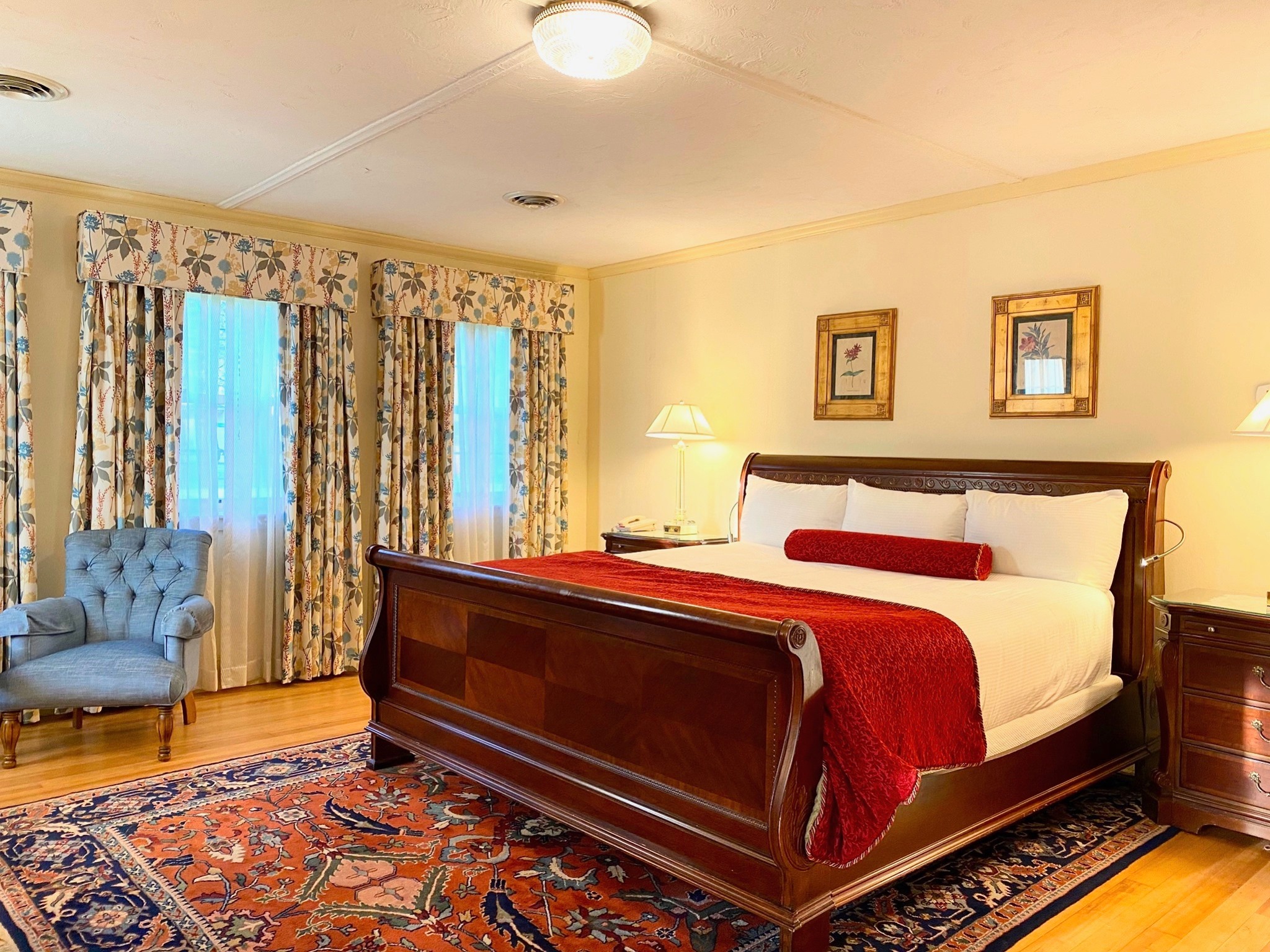
The Wentworth in Jackson is the place to stay in town for exploring the surrounding mountains, regardless of season. Its exterior embodies period New England architecture, with a gabled roofline, clapboard siding, and expansive verandas that hint at the hospitality within. The design balances grandeur with approachability, giving the impression of a village lodge rather than a formal hotel.
Inside, the interiors are homely yet refined. Wide wooden floors, exposed beams, and wood-paneled walls create a sense of warmth, while stone fireplaces punctuate sitting rooms and suites, offering both literal and figurative hearths for guests. Furnishings combine traditional New England craftsmanship with modern comfort, from upholstered armchairs to carefully curated rugs, giving rooms a lived-in, welcoming feel. Several suites feature private hot water jacuzzis, ideal for warming after a day spent hiking in the White Mountains or skiing nearby.
Coastal Charms: A Journey Through Southern New Hampshire
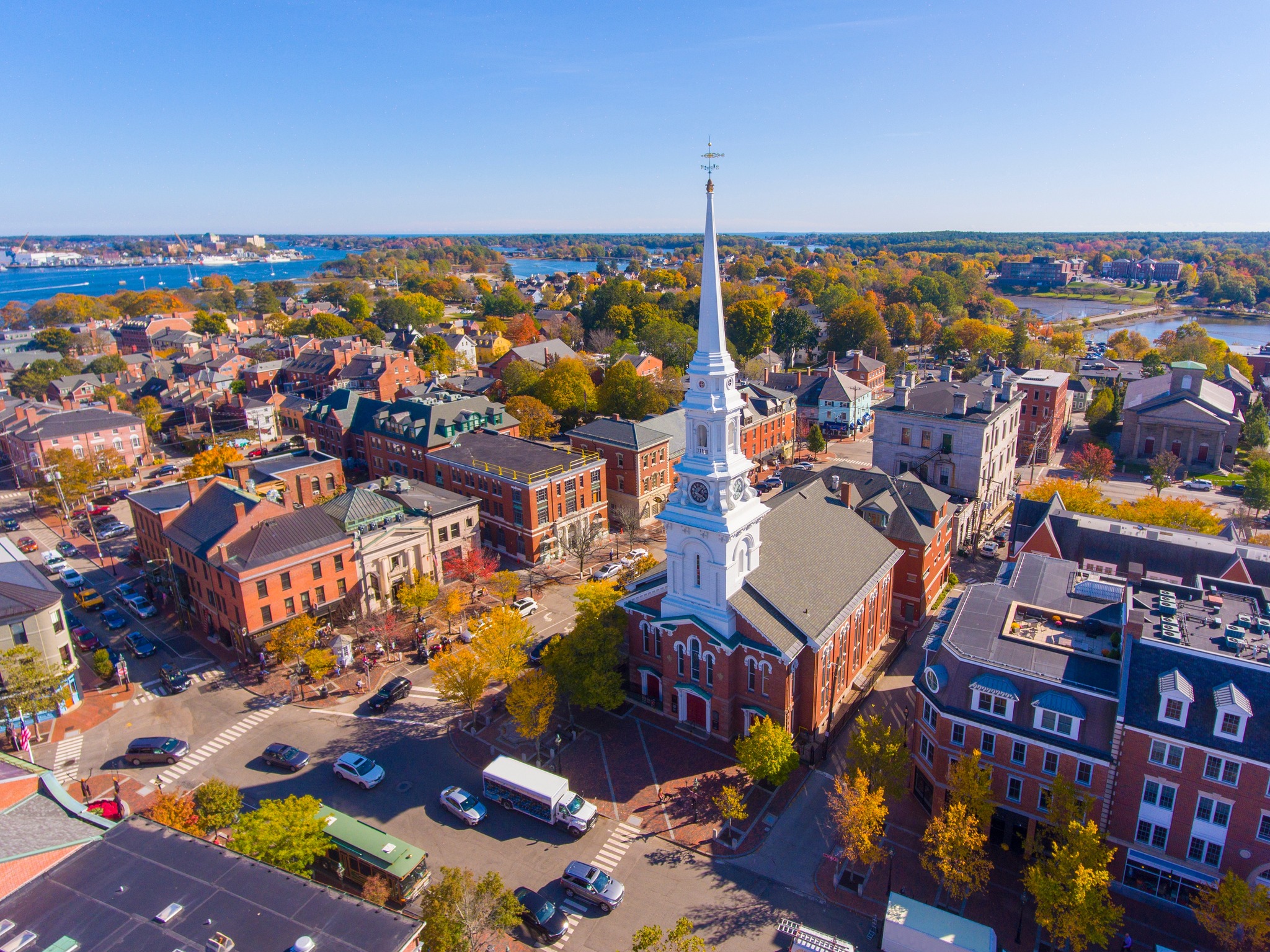
Heading south, the coastline unfolds with historic towns, rolling hills, and glimpses of the Atlantic. Inland forests give way to salt air and harbor lights.
Portsmouth is distinguished by cobblestone streets, colonial brick architecture, and Market Square at its center, anchored by North Church. Sailboats and ferries traverse the harbor, and boutique shops and galleries line the streets. The city’s layered history is visible in every brick, yet contemporary life thrives alongside it.
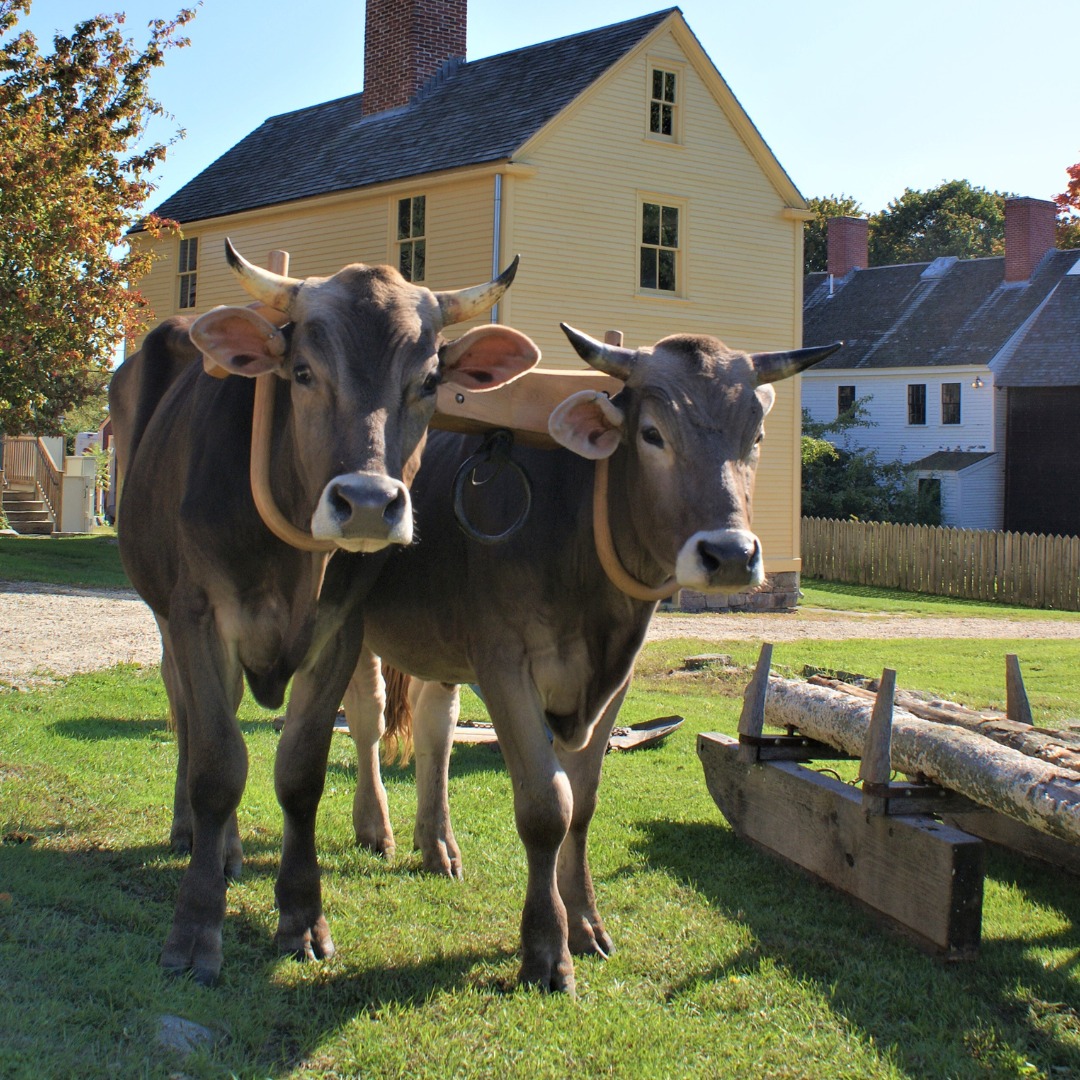
There you will find the Strawbery Banke Museum. It is far more than a museum, more a living town that carries the atmosphere of another time. It is not a replica but the original neighborhood, preserved as it was centuries ago, with old clapboard houses, gravel roads, and interpreters dressed in period attire.

They embody former residents, recounting stories of daily life as visitors move between homes, gardens, and workshops. The museum spans more than three centuries, offering a vivid look into New Hampshire’s past through the trades of coopers, blacksmiths, and shipbuilders.
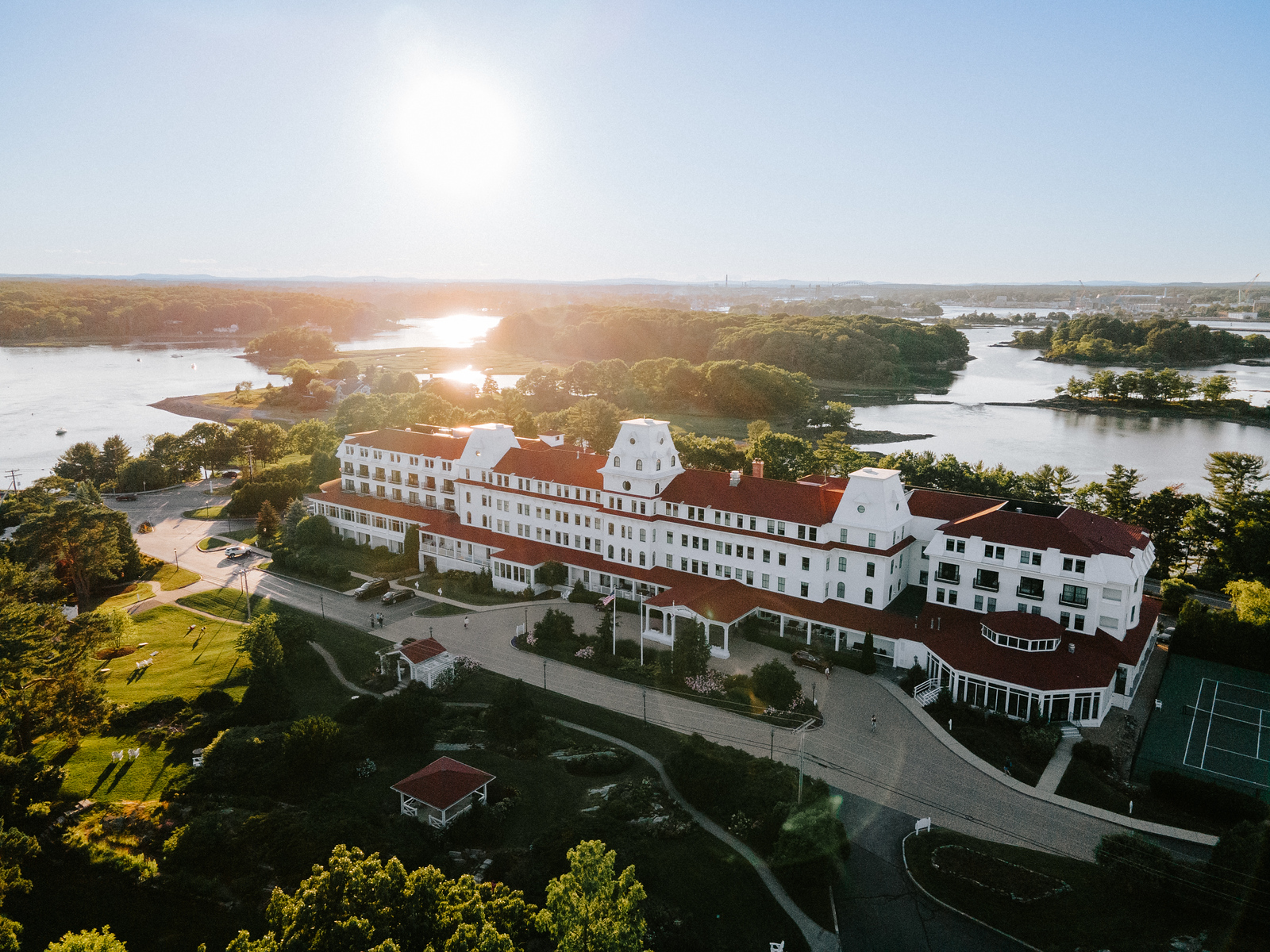
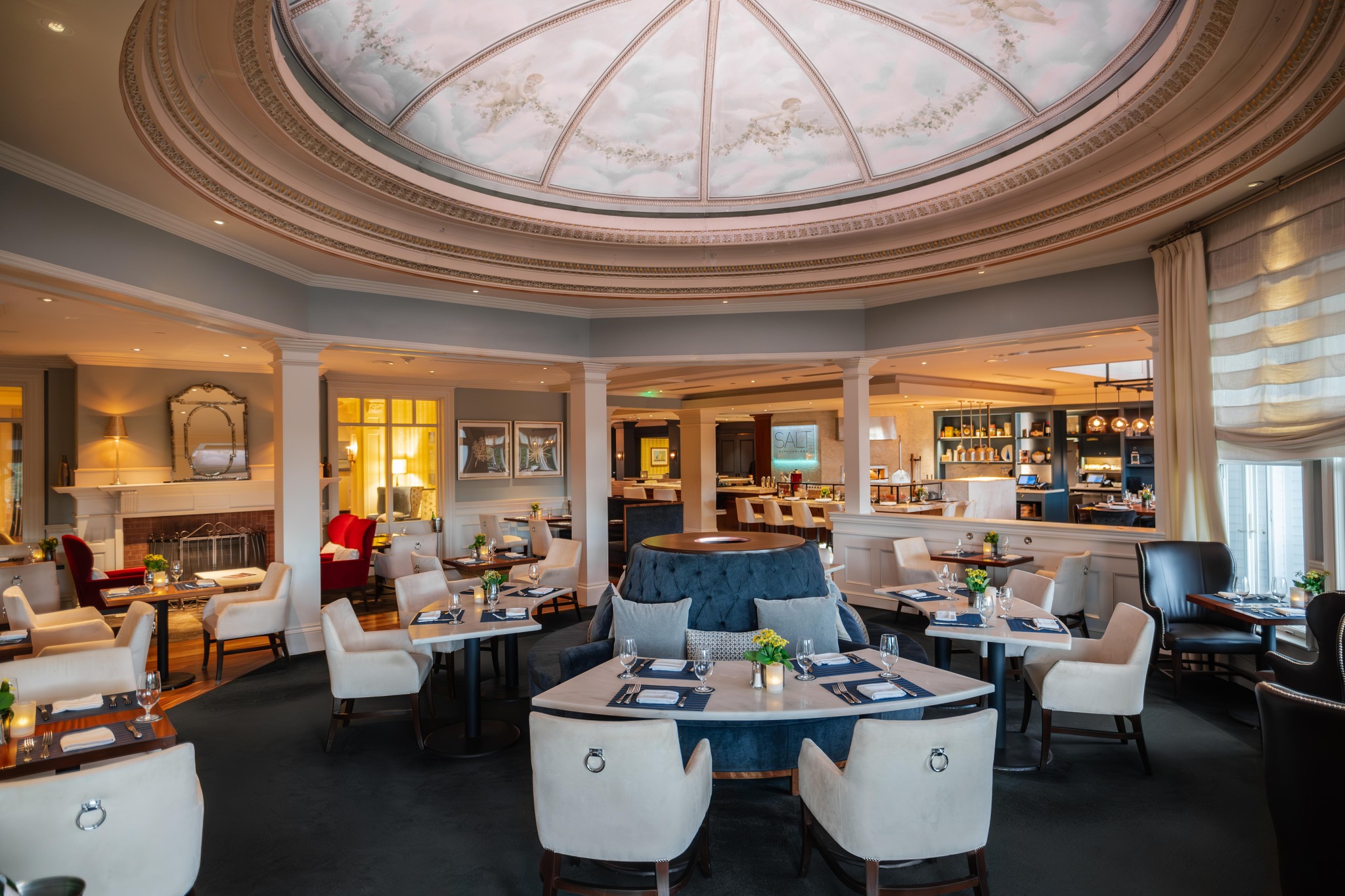
New Hampshire’s refinement extends beyond its natural beauty and history. It can be polished and sophisticated, as seen in New Castle’s Wentworth by the Sea. This late nineteenth-century hotel, with its Victorian towers, verandas, and manicured grounds overlooking Little Harbor, remains a favored retreat for those from Boston and beyond. Interiors feature high ceilings, wood paneling, and fireplaces. Several suites include private jacuzzis, perfect after a day by the water. It is a refined escape where guests spend summers boating, relaxing by the pool, and enjoying the good life.
The hotel offers both formal and relaxed dining. Meals on the veranda overlook the harbor, where the Atlantic mirrors the sky. Terraces and gardens provide peaceful walking paths, while lounges offer quiet interior retreats.
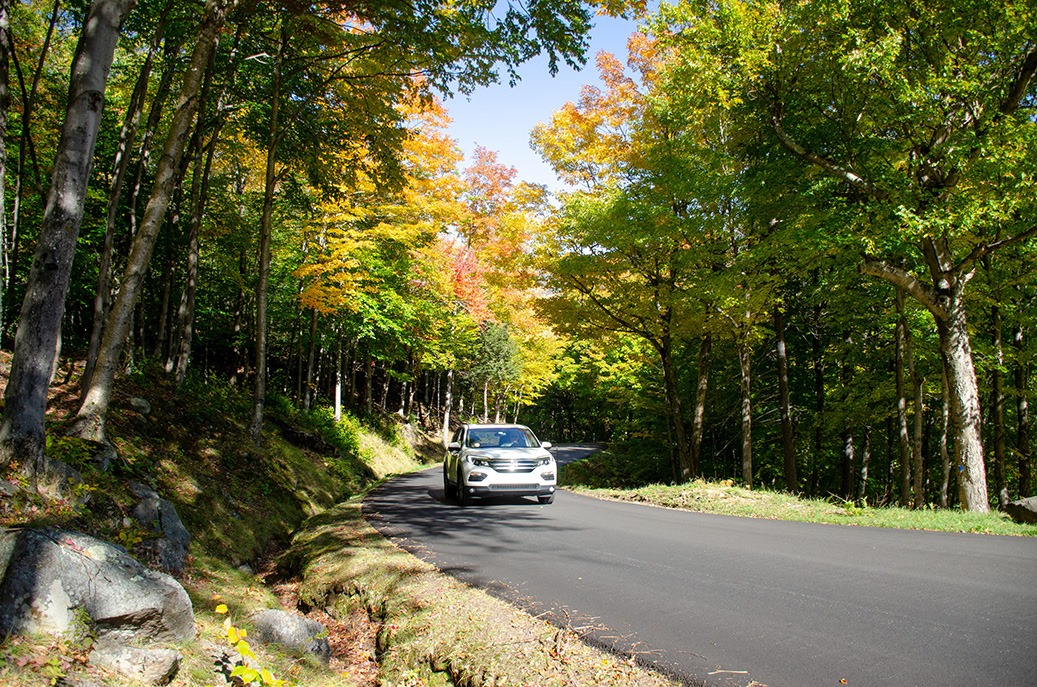
Driving along the coast reveals towns each with its own sense of place. Streets, wharves, and seafood shacks evoke a coastal identity that remains intact, while the Atlantic changes from calm to restless depending on the hour. Southern New Hampshire is grounded and distinctive, where history, architecture, and sea light merge into something enduring and memorable.
This concludes part three of my return to and rediscovery of New England and the Northeastern United States. Part one features coastal Massachusetts, while part two explores the Berkshires and beyond in Pennsylvania. Stay tuned for part four on Connecticut, with parts five and six covering holidays in Rhode Island and Boston.
NEW HAMPSHIRE FB: @VisitNH - Instagram: @VisitNH - X: @VisitNH - #LiveFreeNH - #VisitNH












